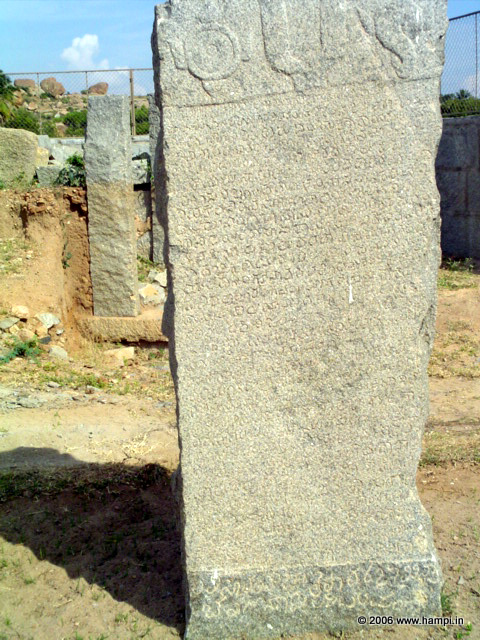Ganigitti Temple

'Ganigitti temple' roughly translates to ‘the oil women's temple’! The reason for the curious name is unknown. There is the main temple and a small shrine adjacent to it. In front of the main temple is the Stambha (lamp post) with inscription on it. The temple is dedicated to Kunthunath, the 17th Tirthankara (Fordmaker) of Jainism.
T
he inscription says the temple was built in AD 1385. Iruguappa, the commander in chief and minister of Harihara II, commissioned the temple. Irugappa is also known for his sanskrit lexicographical work called 'Nanartharatnamala'. Both the composition as well as this temple commissioned by Iruguappa is historically significant.The sanctorum of Ganigetti Temple doesn't contain the idol. However the parapet above the temple spots the stucco image of the Jain saint. This is a typical example of the early Vijayanagara architecture.
Inside the temple you can see some significant architectural features, of the early vijayanagara constructions. The large monolithic lamp post in the compound is another highlight. You can also see an ancient slab with inscriptions describing the circumstance of the temple's commissioning.
The Bhima’s Gateway, a gateway with military archetecture just behind the temple complex is an attraction worth a quick short walk. Ganigitti Temple is on the the Kampli road from Kamalapura.
You'll take this same road to reach Vittala Temple or Malyavanta Hill from Kamalapura village. While Ganigitti Temple is easily visible on your right soon after you've passed the Mayura Bhuvaneshwari Hotel, the Bhima's Gateway is a bit off from the main road. Take a path that goes behind the temple to reach the gateway.
Visit Ganigitti and Bhima's Gateway as part of the Route 5 described in the Hampi tour itinerary map.
No admission and photography fee.

Inscription in the courtyard of Ganigitti temple. It says the temple was commissioned in 1386 AD by Irugappa, a general of Harihara II.
Jains were a prosperous and influential in the Vijayanagara period. Irugappa one of the trusted generals of Harihara II commissioned the curiously named temple called Ganigitti temple (the Oil-woman's temple). The inscription is located near the lamppost in the courtyard of the temple.

Ganigitti temple at Hampi
Irugappa, a general of Harihara II commissioned the curiously named temple called Ganigitti temple in 1386AD.
